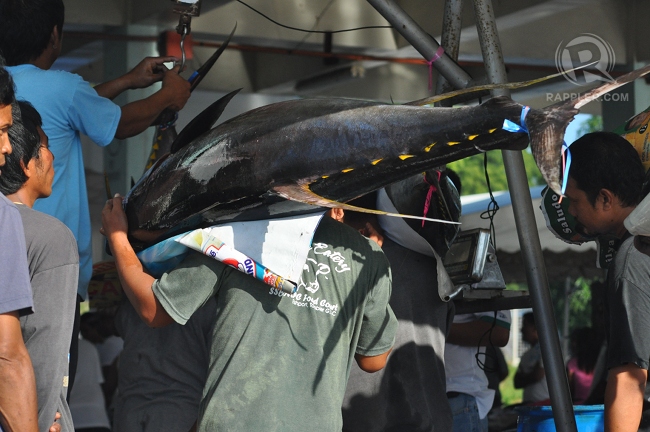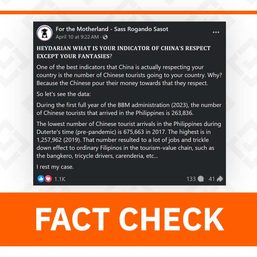SUMMARY
This is AI generated summarization, which may have errors. For context, always refer to the full article.
GENERAL SANTOS CITY, Philippines – A 53.67% hike in frozen foreign tuna imports has increased the total volume of fish landings at the General Santos Fish Port Complex (GSFPC) for the first six months of this year.
Data released by the GSFPC revealed that the total catch landed at the fish port already reached 91,072.27 metric tons (MT) for the period covering January to June this year, a hefty 41% increase over the same period in 2012.
The bulk of the increase however came in frozen tuna which accounted for 52.85% of the total recorded landings.
Some 42,323.63 MT tons of frozen tuna from January to June are of foreign origin compared to only 27,542.29 MT in 2012.
Frozen tuna landings from Manila in the first half of 2013 likewise increased to 5,812.65 MT as against only 2,042.47 MT last year for a 184.58% hike.
The figures do not include landings from the private wharves of big tuna producers that include RD Fishing, TSP Marine, Amadeo Fishing and Frabelle Fishing to name a few.
Landings of world famous big yellowfin tuna however dropped slightly at 5,527.76 MT over the same period. Last year, big yellowfin tuna landing was at 6,160.56 MT. Big yellowfin are landed and weighed in Market 1 at the fishport.
Virtually unchanged were the landings at the Market 2 which registered a total catch of 22,360.57 MT compared to 22,913.74 MT over the same first half figure last year.
Also increasing output is Market 3 where a total of 15,047.66 MT of skipjacks and tuna-like species are landed. In represented a 151.81% increase over last year’s first half total of only 5,975.83 MT. The first half landings in Market 3 likewise already topped the 2012 total of 15,024.08 MT.
Exemptions
The first half total of frozen tuna from foreign origin this year is already on pace to top the all-time high annual total of 2009 when some 72,557.87 MT, the last year before the Western and Central Pacific Fisheries Commission imposed a 2-year closure of several pockets of high seas to purse seine tuna fishing.
It was extended during the 9th session of the WCPFC held in Manila in December last year.
The Philippines however was granted exemption and was allowed to send catcher boats beginning October of 2012.
Pocket 1 High Seas, some 700 nautical miles (around 1,300 kilometers) southeast of General Santos City, is among the four pockets of seas in the Western and Central Pacific region that was opened exclusively for Filipino fishing vessels.
In March this year, Philippine Bureau of Fisheries and Aquatic Resources (BFAR) director Asis Perez said approximately 3,000 MT in tuna originating from the area have already been landed in General Santos City for the month of January alone.
Perez also said they expect an increase of 50,000 MT in tuna catch this year following the WCPFC decision to extend the Philippine exemption
Some 36 Filipino tuna catcher vessels with gross tonnage of not more than 250 metric tons were allowed to operate in an area of about 590,000 square kilometers east of Indonesia and north of Papua New Guinea.
Mariano Fernandez, president of the Tuna Canners Association of the Philippines however said despite the increase in tuna landings, canned tuna production is down by almost 50%.
Fernandez did not provide data to support his statement.
But production capacity of canned tuna manufacturer Ocean Canning, which Fernandez manages, is now down to only 50 tons from its full capacity of 100 tons.
He said the production capacities of the 6 tuna canning plants in General Santos City in inversely proportionate to the volume of frozen tuna landings.
“The more frozen tuna means less fresh skipjack landings which we use for canned tuna production,” Fernandez said.
Rosanna Contreras of the Socsksargen Federation of Fishing and Allied Industries however said frozen foreign tuna landings are delivered to institutional buyers, mostly local tuna canning plants.
She said tuna canneries in the city are using frozen tuna as raw materials for production. – Rappler.com
Add a comment
How does this make you feel?











There are no comments yet. Add your comment to start the conversation.